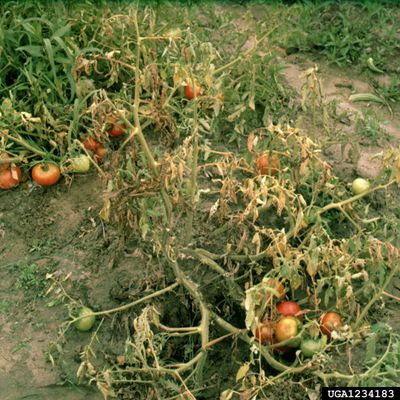What Causes Southern Blight of Tomatoes?
Southern blight is caused by a fungus that can live in the top 2 to 3 inches (5-8 cm.) of soil for several years. The disease is unleashed when plant matter is left to decompose on the soil surface.
Signs of Southern Blight of Tomatoes
Southern blight of tomatoes is generally a problem in warm, damp weather and can be a serious problem in tropical and subtropical climates. Initially, southern blight of tomatoes shows up by rapidly yellowing, wilting leaves. Very soon, you’ll notice water-soaked lesions on the stems and a white fungus at the soil line. Small, round, seed-like growths on the fungus turn from white to brown. Any fruit on the plant becomes watery and rotted.
Tomato Southern Blight Treatment
The following tips on controlling tomato southern blight could help with this disease:
Purchase tomato plants from a reputable grower and allow a wide spacing between plants to create a distance barrier and make clean-up easier. Stake tomato plants to prevent them from touching the soil. You may also want to prune lower leaves that may come in contact with the soil. Remove infected plants at the first sign of disease. Burn infected plant parts or place them in plastic bags. Never place them in the compost bin. Water with a soaker hose or drip irrigation system to keep the foliage as dry as possible. Pick up debris and keep the area free of decomposing plant matter. Pull or hoe weeds. Apply a thick layer of mulch to create a barrier between the foliage and the soil. Clean garden tools immediately after use. Always sanitize tools with a mixture of four parts bleach to one part water before moving to an uninfected area. Rotate crops with corn, onions, or other non-susceptible plants. Plant tomatoes in a different spot every year. Till the soil deeply at the end of the season and again before transplanting to incorporate any remaining debris thoroughly into the soil. You may need to work the soil several times.
